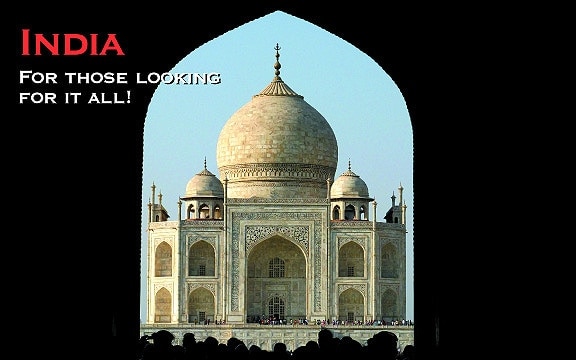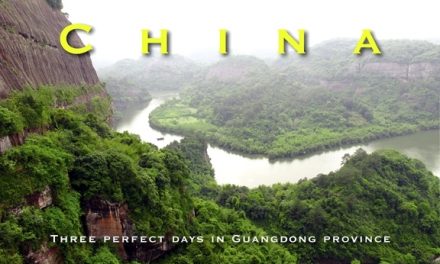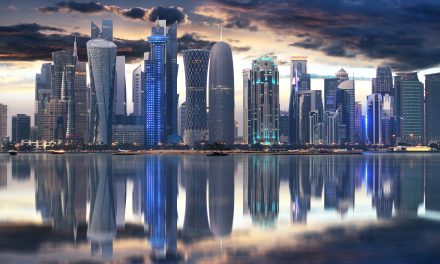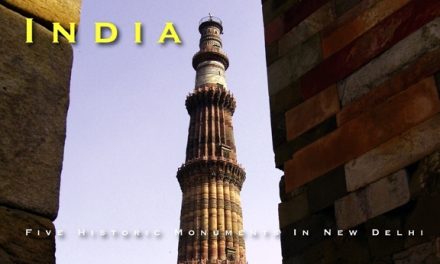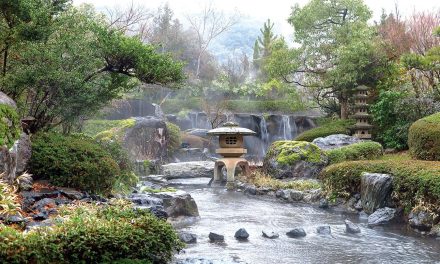India
For those looking for it all!
Published in the Summer 2008 Issue of Canadian World Traveller
Text and Photos by Michael Morcos
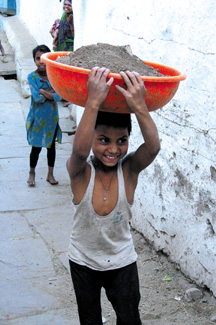 I had reached the halfway point of my trip. On the plane flying me north to Bhopal, I reflected on all the sights and sounds I had experienced in my first week.
I had reached the halfway point of my trip. On the plane flying me north to Bhopal, I reflected on all the sights and sounds I had experienced in my first week.
With the hectic pace I set for myself, I had managed to see far more than one would ever expect possible.
In part one of this article, I visited Ahmedabad, Mumbai (India’s largest city, formerly known as Bombay) and Indore. Now, I looked forward to spending my second week in incredible India with much anticipation.
Thoughts of India
An abundance of life filled the city streets. People of many religions, sects and beliefs lived harmoniously together. Though life could be sometimes difficult in the big city with all the noise, heat and crowded quarters, these people seemed to always find a smile in their day-to-day lives and were always respectful of one another.
These few days travelling through incredible India brought to me feelings of warmth and respect for its people and their easygoing friendly manner.
Throughout the trip, I was dazzled by beautiful brightly coloured saris. Western dress was also evident but the saris looked like the clothing of choice to fight the effects of the sun and the heat.
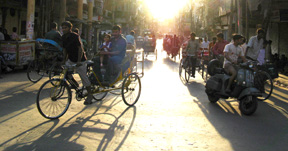 Sharing the Roads
Sharing the Roads
Getting around India is akin to a thrill ride in an amusement park. Like a dog happily wagging its tail in the back seat of a car, I looked forward to the wild rides in the tuk-tuks that zigged and zagged through traffic. It was organized chaos! I swear there were angels riding in every vehicle and keeping us safe.
A tuk-tuk is one of the chief modes of transportation in India. It is a three-wheeled motorized version of the traditional rickshaw.
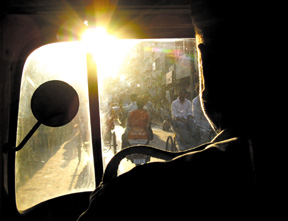 On the streets, you would see cars of old and new designs, such as the British Morris Minor, designed in 1948, and the 1950’s Fiat car, which is still being manufactured in India and the preferred choice of many taxi companies. High-end cars and ultra luxury motor coaches shared the same roads.
On the streets, you would see cars of old and new designs, such as the British Morris Minor, designed in 1948, and the 1950’s Fiat car, which is still being manufactured in India and the preferred choice of many taxi companies. High-end cars and ultra luxury motor coaches shared the same roads.
Alongside these cars were camel carts, hand-pulled trolleys, mopeds and the armies of three-wheeled Indian Tuk Tuks. From the most ancient modes of transportation to the most modern, all can be found in comfortably sharing the same roads.
Holy Cow Batman!
Batman was nowhere to be found. Neither was Robin. But sacred holy cows were just about everywhere on my journey though India. I learned that the cows actually have owners who treat them very well. The cows are left to wander the streets and countryside returning home as they please.
The cows give three very important things to their owners — milk, dung and urine. Now we all know of milk and how dung is used for fuel and fertilizer but what could urine be used for? In India, urine can be used for medicine as a treatment or cure for anything from skin diseases, kidney and liver ailments to obesity and heart ailments.
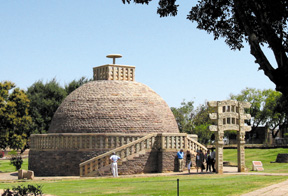 Sanchi
Sanchi
My next destination was Sanchi. A 45-minute drive from the city of Bhopal brought me to the best surviving Buddhist monuments in India.
The great stupas of Sanchi, a World Heritage site, were concealed in a rural and hilly area in the State of Madhya Pradesh and were spared from destruction by the Moguls who did not want detractions or competition vis-à-vis their own imposed religion.
The main Stupa, built in the third century BC was a true work of art. Even more amazing were the four stone gates, intricately carved solid rock pillars depicting a long history of Buddhist themes.
Greek Pillar
Close to the great Stupa were the remains of Votive pillars that were erected in approximately 140 BC. The only one that still stands is the Heliodorous Pillar, also known as Khamba Baba. The pillar bears an inscription that reveals relations existed between this region and the Greek kingdoms and the remarkable fact that a Greek had become a follower of the Hindu god Vishnu.
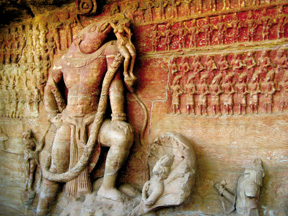 Udaigiri Caves
Udaigiri Caves
A group of 18 Hindu and two Jain caves carved right into the sandstone hills are found 15 kilometres from Sanchi.
Most interesting, was the huge image of Vishnu in his boar incarnation that adorned cave Number 5.
Our visit was short, but it made me think how incredible it was to see such little-known art in the middle of what appeared to be nowhere.
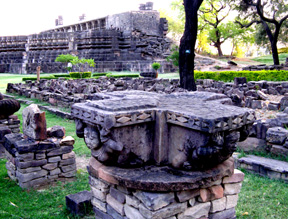 Biji Mandal
Biji Mandal
Excavations are slow but sure and the Biji Mandal ruins are yet another of many sites that the Indian government was trying to restore.
The main building was formally the Parmara Temple but it was converted to a Mosque by the conquering Moguls who turned pillars and large stones upside down and inside out to hide Sanskrit inscriptions and thus create an Islamic place of worship.
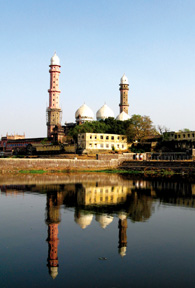 Bhopal
Bhopal
Bhopal is the second biggest city in the state of Madhya Pradesh and also its capital. Bhopal is known as the City of Lakes as its landscape is dotted with a number of natural and manmade lakes.
Unlike the other cities I visited in India, the residents seemed in no great rush and went about their day in a leisurely manner.
Taj-ul-Masjid Mosque
One of the most impressive structures in Bhopal is the Taj-ul-Masjid, one of the largest Muslim mosques in India. Its name translates to ‘The Crown of Mosques’. Construction started in the second half of the 19th century but due to lack of funding, and after a long delay, the building was only recently completed.
This beautiful edifice has a pink facade, three domes, two very tall white-domed minarets, an impressive main hall with detailed pillars, marble floors and a large inner courtyard.
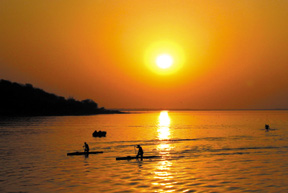 Boat Ride on the Lake
Boat Ride on the Lake
Getting away from the heat was easy. A one-hour boat ride around Bhopal’s main lake at sunset gave me some time to see how the people in this city relax.
With a tea in hand, I found this place quite different from the other places I had visited. The state of Gujarat was dry and arid, while the city of Mumbai was congested and noisy.
In contrast, Bhopal seemed like a paradise with fresh water and greenery everywhere and people enjoying the calm waters of their lake.
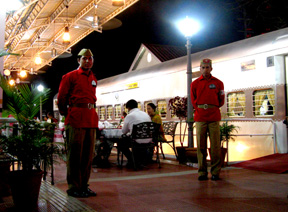 All Aboard for Supper
All Aboard for Supper
A unique supper setting was at hand this evening. An old rail car that had been relocated to our hotel site now served as a restaurant.
The scene was perfect. I felt transported back to the golden age of rail travel, as the waiters dressed like conductors, served us up a tasty Indian meal.
Although I had a choice of seating in the cabin area, I much preferred eating under the stars with a cool night breeze blowing.
Bhimbetka Caves
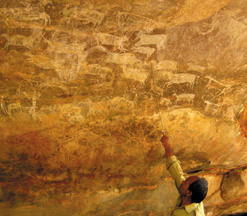 Some of the worlds oldest cave paintings were found at the Bhimbetka caves. This was another of many World Heritage Sites that I would visit in India.
Some of the worlds oldest cave paintings were found at the Bhimbetka caves. This was another of many World Heritage Sites that I would visit in India.
130 caves make up the complex but I saw only the very biggest and most decorated. Truly amazing was that some paintings were carbon dated to be 6,000 years old yet looked very well preserved.
Even more unbelievable was that the area was almost devoid of the mass tourism that plagues such sites, enabling me the comfort to explore the site at a leisurely pace.
Holi Day
The colourful festival of “Holi” is a yearly event that is celebrated all across the country and to my good fortune, it took place while I was in India.
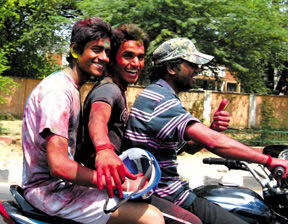 I did not know what to expect but was warned to stay off the streets in the morning. That was the perfect cue for me to get out and get a first hand view. The streets were deserted as most people celebrate at home with friends and family.
I did not know what to expect but was warned to stay off the streets in the morning. That was the perfect cue for me to get out and get a first hand view. The streets were deserted as most people celebrate at home with friends and family.
However, the young kids who were out were decorated in a rainbow of colours, as most Indians celebrated this festival by throwing coloured dyes and powder at each other.
On a couple of occasions I was the target, but the well-mannered locals politely restrained themselves and even posed for pictures.
Delhi
Delhi, the Indian capital and second largest city, would be my last stop before heading home.
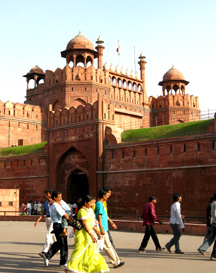 Three days were not enough to explore this fascinating city. It seemed to have a cross-section of everything that could be called India: colossal centuries old forts, world heritage monuments, British colonial streets, boulevards, buildings and also neighbourhoods that would remind you of small villages with cows, goats and even elephants roaming the streets.
Three days were not enough to explore this fascinating city. It seemed to have a cross-section of everything that could be called India: colossal centuries old forts, world heritage monuments, British colonial streets, boulevards, buildings and also neighbourhoods that would remind you of small villages with cows, goats and even elephants roaming the streets.
In these precious days I managed to see the most important sites and took a day trip to Agra to see the Taj Mahal.
I managed to visit the different neighbourhoods of Delhi but I would first start in New Delhi, which was built by the British as the official seat of Government.
This area has broad boulevards, tree-lined streets, opulent houses and many embassies, yet comprises only one tenth of the total area of Delhi.
Connaught Place
Built in 1932 by the British, Connaught Place is found in New Delhi and is unique in its road design. It is based on European urban planning. There is no mistaking this circle road because it is one of a kind on the New Delhi map.
Twelve different roads lead out from the outer ring and the Victorian architecture that adorns the area is part of the colonial legacy left behind by the British. Being one of Delhi’s most popular shopping areas, almost anything can be bought here.
Viceroy’s House
Until 1950 it was known as “Viceroy’s House” and served as the residence of the Governor-General of India but is now the official residence of the President of India and is similarly described as the White House to Americans or 10 Downing Street to the British.
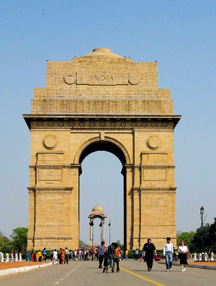
India Gate
Situated on the Rajpath in New Delhi, the India Gate was originally called the All India War Memorial and commemorates the Indians who died during the First World War and houses the tomb of the unknown soldier.
The impressive monument reminded me of the Paris’ Arc de Triomphe and is one of the most famous and visited sites in Delhi.
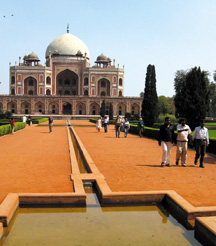 Humayans Tomb
Humayans Tomb
Humayan was the second Mogul Emperor, and his tomb in Delhi is one of the best examples of early Mogul architecture.
At first glance I knew it looked familiar. Then it dawned on me. This was a smaller looking Taj Mahal, much smaller and built of red sandstone instead white marble. But it was the inspiration to build the Taj in Agra.
The grounds were exceptionally well kept with green lawns and water fountains. Fortuitously, it was not overrun by tourists making my visit very pleasant.
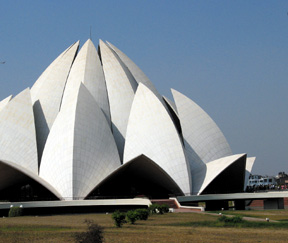
Lotus Building
Used as a house of worship, the Lotus Temple is a more recent addition to the many incredible sites in Delhi. The building actually looks like a Lotus flower and is comprised of 27 huge marble clad “petals”.
It is one of the most visited buildings in the world. On the day of my visit there were very long lineups to see the interior despite the hot sun.
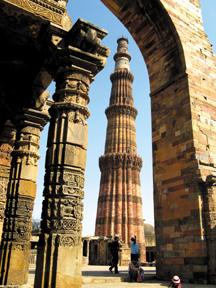
Qutb Complex
The Qutb Complex is an array of monuments and buildings in Delhi. Qutb Minar is the most striking structure and its five-storey tower is the tallest brick minaret in the world.
Also very impressive is the gateway to the complex that has carved panels with inscriptions from the Koran while the many pillars of the Quwwat-ul-Islam mosque had Hindu motifs.
Twenty-seven Jain temples were destroyed and their materials used to construct the many imposing structures found in this complex.
Easter in India
This was a first for me. I spent what many consider to be the holiest of Christian days in India. It would prove to be a great experience. Easter Sunday mass was celebrated in nothing less than the premises of the Holy See in Delhi.
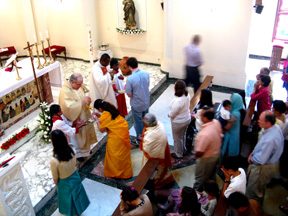
The embassy area is the Vatican’s main building in India and was open to worshipers .The mass was said in English by an Italian priest. I would say the huge crowd was very international.
Approximately half were westerners (probably from the different embassies and other tourists like me) and the other half local Roman Catholic Indians.
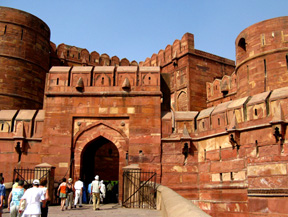 Agra
Agra
Agra Fort would be my first stop en route to the best known man-made structure in Agra, the Taj Mahal.
Agra Fort, a World Heritage Site is also known as Lal Qila or the Red Fort of Agra.
It is about 2.5 km northwest of its much more famous sister monument, the Taj Mahal. The fort can be more accurately described as a walled palatial city and was built by the famous Emperor Akbar.
The fort’s gates and many halls were very impressive. This monument would be the main attraction in most other Indian cities but alas seemed like a secondary attraction for many such as myself as we awaited in eager anticipation our visit to the world-famous Taj.
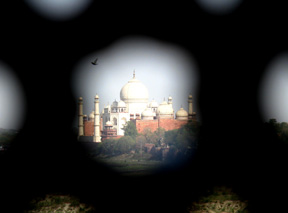
The Taj Mahal
No trip to India would be complete without a trip to see the Taj Mahal. Getting there from Delhi is a story in itself. It required a train, a car, a tuk tuk and 45 minutes of queuing time in the hot sun.
I turned the final corner and there it was, glistening in the radiant afternoon sun. I was rendered motionless and speechless. I was in awe.
The hustle and bustle of the crowds was all around me. Yet they all ceased to exist as I was transfixed by this remarkable vision.
This was one of the most beautiful sites I have ever seen! Its arches, domes and spires were all in perfect balance. A detailed engraving on the front side and a beautiful reflecting pool made it all a true architectural masterpiece.
In a cruel twist of fate, the Taj Mahal’s builder Emperor Shah Jahan had the craftsmen put to death after its completion, so that nothing so beautiful could ever be built again.
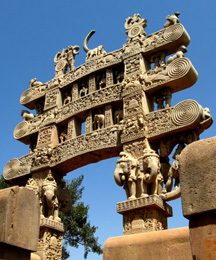
An India for Everyone
Three months after returning home I found myself still reeling from wonderful, colourful, exotic India. It is all countries in one.
Topographically, it has the world’s highest mountains in the north, hot arid deserts in the west, tropical forest in the south, a river delta in the east and sandy beaches just about everywhere along its coasts.
With its thousands of years of history, boundless attractions, multicultural events and festivals and its growing hospitality industry, it is the perfect place for both the adventure seeker and the leisure traveller. For those of you looking for it all, India has it all!
Part One
If you enjoyed this article you may want to read part one of our journey through India, which appeared in our spring issue.
If you go:
India Tourism
60 Bloor Street W. Suite 1003
Toronto, ON M4W 3B8
Tel.: 416-962-3787
Email: indiatourism@bellnet.ca
Website: www.incredibleindia.org

